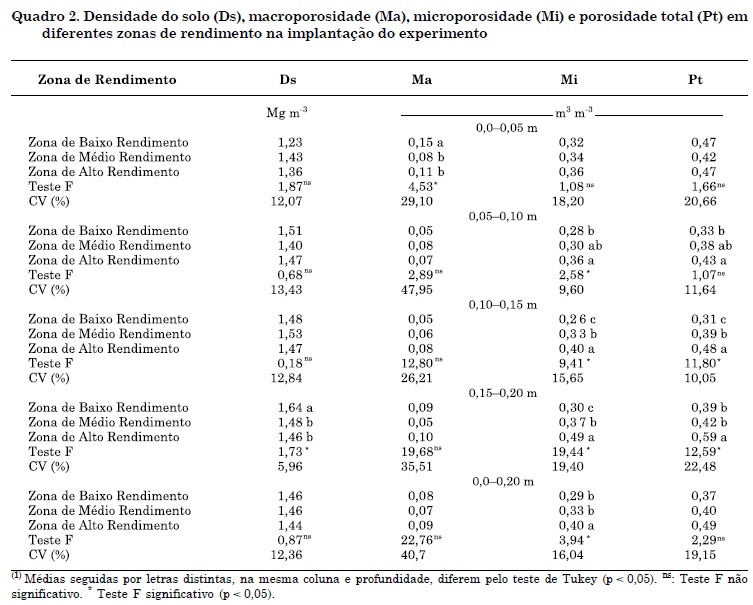Soil compaction at high intensity degrees is a hardly reversible process in the no-till system (NT), mainly in clayey soils. Generally, its occurrence in croplands is often irregular and restricted to areas with a previous history of pressures associated to intensive traffic of agricultural machineries. The purpose of this study was to investigate changes in soil physical properties of a red Oxisol with clayey texture (450 g kg-1) and soybean yield, caused by two site-specific chisels and conventional (random) chisel tillage. For this work, a 50.6 ha cropland area under long-term no-till and site-specific farming was selected in the Municipality of Victor Graeff, located in the plateau region of Rio Grande do Sul. The climate is a subtropical Cfa with annual rainfall ranging from 1500 to 1750 mm, average temperature of 20 °C, at 490 m asl. Based on three crop yield maps, the field was subdivided in three management zones with distinct yield potential where the soil physical properties were investigated. The following treatments were established in the low yield zone (LZ): (a) conventional chiseling at fixed soil depth (0.30 m) (CC); (b) site-specific chiseling with Fox® equipment at fixed soil depth (0.30 m) (SSCF); (c) site-specific chiseling with Fox® equipment at variable soil depth (0.10 to 0.30 m) based on maximum soil penetration resistance maps (SSCV); and (d) control without chiseling (CWC). The high yield zone (HZ) was used as a reference to evaluate treatment effects on soybean grain yield. Treatments were arranged in parallel strips of 100 x 20 m, in a randomized block design. In three evaluations, the soil water infiltration and bulk density, macro and microporosity and total porosity were evaluated in the layers 0.0-0.05, 0.05-0.10, 0.10-0.15 and 0.15-0.20 m. The results of the initial soil characterization showed higher bulk density and lower soil porosity in the 0.15-0.20 m layer, in the LZ in relation to HZ. Treatments showed an immediate increase of water infiltration after chiseling. The increase in water infiltration in treatments CC and SSCV was four times the water infiltration observed in the CWC. However, the chiseling effect, regardless of the chisel type, was ephemeral and after seven months there was a decrease of water infiltration in chiseled soil, similar to CWC. Of the chisel types, the SSCV was superior to CC by maintaining higher soil coverage and by increasing soybean yield. Although, in a crop season with high rainfall, no positive effects of chiseling on soybean yield were noticed, in relation to CWC.
precision farming; site-specific chiseling; soil compaction; water infiltration








